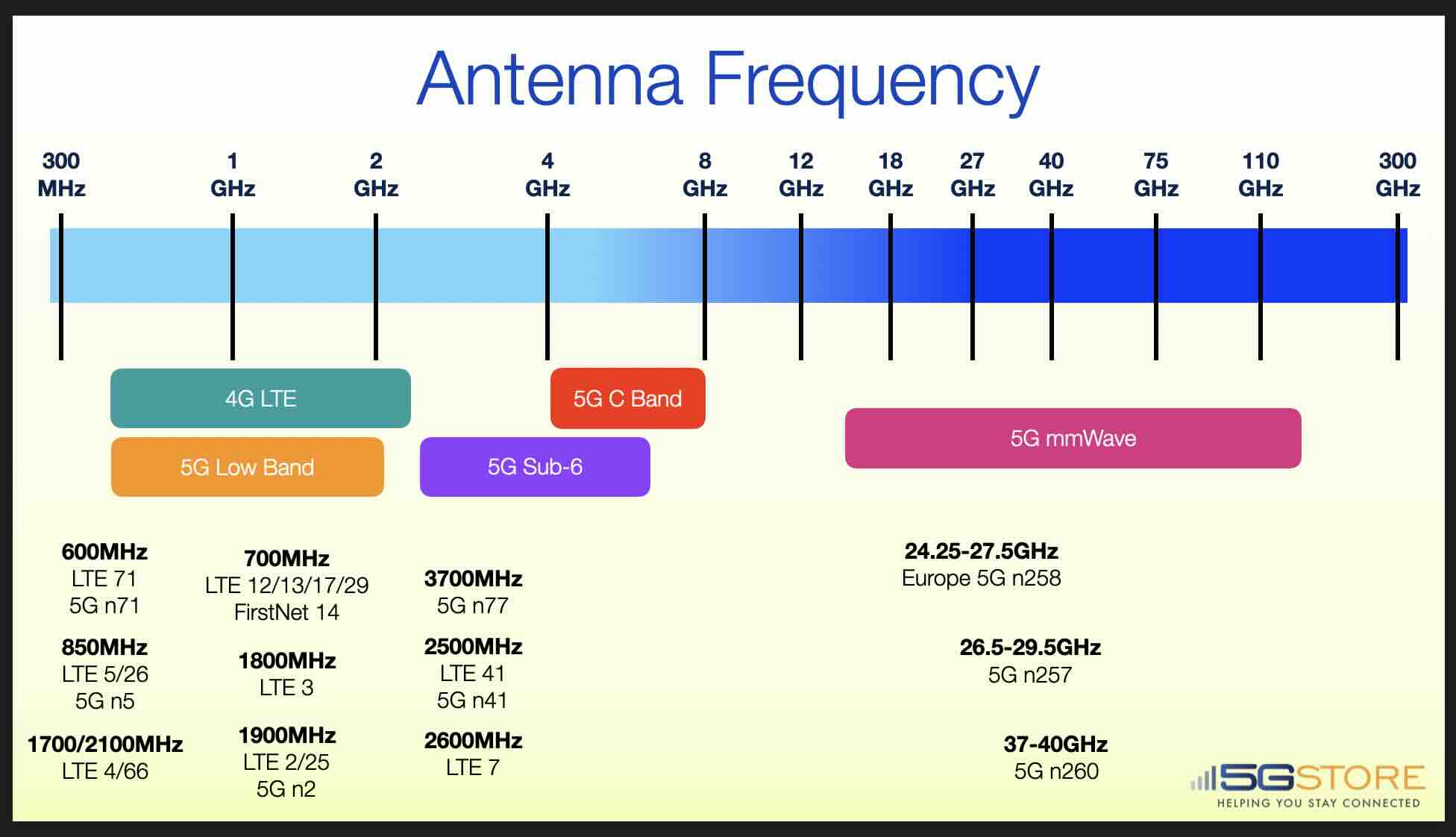


Antennas play a critical role in the transmission and reception of cellular signals. They are designed to emit or receive electromagnetic waves, which carry information such as voice, data, and video, over the air. In the case of cellular networks, antennas are used to communicate between the mobile devices and the base stations. When you make a call or send a message on your smartphone, your device sends the signal to the nearest base station via an antenna, which then relays the signal to its destination.
But what about antenna frequencies? How do they impact cellular communication?
LTE (Long-Term Evolution) and 5G (5th Generation) cellular frequencies are used for wireless communication over cellular networks. LTE and 5G use various frequency bands depending on the region and the cellular operator. Generally speaking, LTE uses lower frequencies than 5G. Some are similar however, but are expanded to include additional frequency ranges (e.g. LTE Band 71 and 5G Band 71). It's important to note that frequency bands used by LTE and 5G vary between countries and network operators.
The use of different frequency bands can impact the speed, coverage, and penetration of wireless signals. Higher frequency bands can provide faster data speeds and lower latency, but they may have lower coverage and penetration compared to lower frequency bands. This is why it's important to choose the right antenna frequency for your specific use case. Whether you're building a cellular network, designing a wireless device, or simply trying to improve the signal quality on your smartphone or modem, understanding antenna frequencies is essential.
At 5Gstore.com, we specialize in providing high-quality antennas for cellular networks, WiFi, and GPS. Our antennas are designed to meet the specific needs of your project, whether you're looking for a low-cost solution for a small deployment or a high-performance antenna for a large-scale network.
5G Band n77 is one of the most widely used mid-band frequencies for 5G New Radio (NR) networks. It operates in the frequency range of 3700 MHz to 4200 MHz, making it part of the C-band spectrum that balances coverage and performance. Band n77 is deployed in various regions, including North America, Europe, and parts of Asia, to support enhanced mobile broadband and enterprise applications.
Balanced Coverage and Speed
Operating in the mid-band spectrum, 5G Band n77 provides a balance between the extensive coverage of low-band frequencies and the high-speed capabilities of mmWave bands. This makes it an ideal choice for urban and suburban deployments where both speed and range are essential.
Higher Data Transfer Rates
Compared to low-band frequencies like Band n5, Band n77 supports significantly higher data speeds, enabling seamless video streaming, gaming, and real-time applications. The increased bandwidth also reduces network congestion, leading to more consistent connectivity.
Improved Network Capacity
The 3700 MHz to 4200 MHz range allows mobile operators to allocate larger bandwidths, which enhances network capacity. This ensures a better user experience, especially in densely populated areas with high data demand.
Enterprise and Private Network Support
Band n77 is not only used for consumer mobile services but also plays a crucial role in enterprise networking. It supports private 5G networks for industries like manufacturing, healthcare, and logistics, where dedicated high-performance connectivity is needed.
Enhanced Reliability for 5G Services
Due to its C-band positioning, Band n77 provides reliable connectivity with lower latency compared to lower frequency bands. This is essential for applications such as autonomous vehicles, remote surgeries, and smart city infrastructure.
While Band n77 offers significant benefits, there are some considerations to keep in mind:
Penetration Limitations: Mid-band frequencies do not penetrate buildings and obstacles as effectively as low-band frequencies, which can affect indoor coverage.
Availability by Region: Not all mobile operators have deployed Band n77, so network support may vary depending on your location and service provider.
Device Compatibility: Not all 5G devices support Band n77, so it's important to check compatibility when purchasing a 5G router, smartphone, or other wireless equipment.